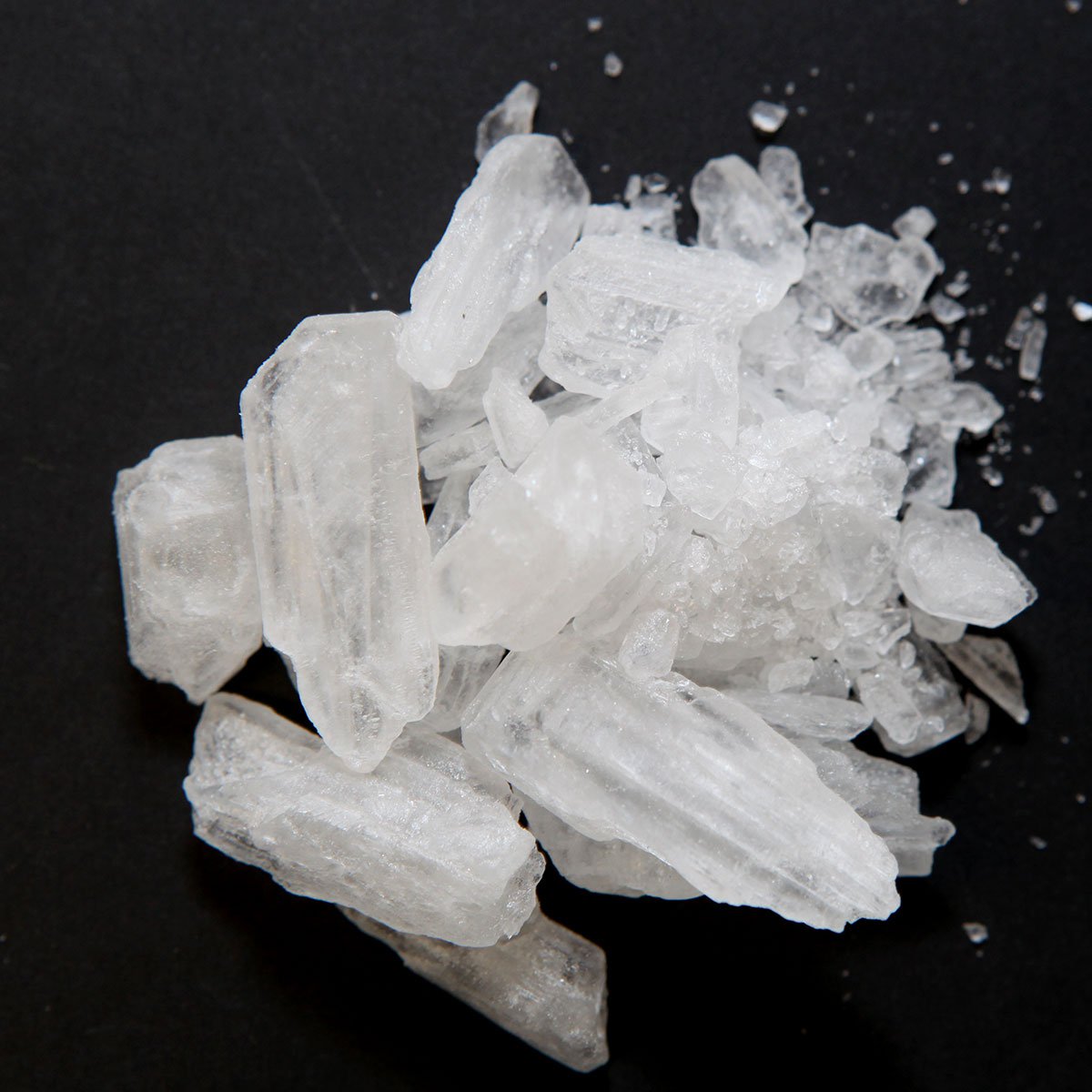Methamphetamine
-- { Meth, Ice, Tina, Crystal } --
Methamphetamine is a powerful, highly addictive stimulant that speeds up the central nervous system. It takes the form of a white, odorless, bitter-tasting crystalline powder that easily dissolves in water or alcohol. It is smoked, ingested, or snorted and users report feeling energized, confident, and euphoric but associated with anxiety, paranoia, hyperactivity, and even psychosis.
What is Methamphetamine?
Methamphetamine, often known simply as 'meth', is a highly potent and addictive psychoactive drug. It typically takes the form of a white, odorless, and bitter-tasting crystalline powder. There are various methods of intake, including swallowing, snorting, smoking, or injecting. Meth stimulates the brain, resulting in a rush of energy and focus, but it can also induce feelings of anxiety, irritability, and paranoia. Despite its potent high, meth is a highly dangerous and illegal substance in many jurisdictions, primarily due to its potential for addiction, health damage, and societal harm.



How it Works
At a biological level, methamphetamine works by altering the chemical landscape of the brain. It primarily boosts the release of dopamine, a neurotransmitter responsible for feelings of pleasure and reward. This flood of dopamine is what produces the intense euphoria associated with meth use. It also releases serotonin and norepinephrine, although this occurs in much smaller amounts compared to the dopamine release.
However, repeated meth use disrupts normal brain function. It can deplete the brain's own dopamine reserves and damage the brain's ability to naturally produce and regulate dopamine. Over time, this results in a reduced ability to experience pleasure without the drug, leading to dependence and addiction.
Further, chronic meth use can damage other areas of the brain as well, impairing cognitive functions like memory and learning, and contributing to mental health issues such as depression and anxiety. Some of this damage may be permanent or take years of abstinence to heal. The comprehensive impact of methamphetamine on the brain illustrates the profound risks associated with its use.
History
The history of methamphetamine dates back to the late 19th century, when it was first synthesized. Its powerful stimulating effects led to its use by soldiers in World War II to combat fatigue and enhance focus. However, the long-term consequences became increasingly apparent post-war, leading to growing concerns about its safety. By the 1960s, meth had permeated into the realm of recreational drug use and quickly gained notoriety for its intense high and addictive nature. Subsequently, it was criminalized in many regions. Despite legal restrictions, methamphetamine use spread globally, often wreaking havoc in communities due to its association with crime, social decay, and severe health issues.